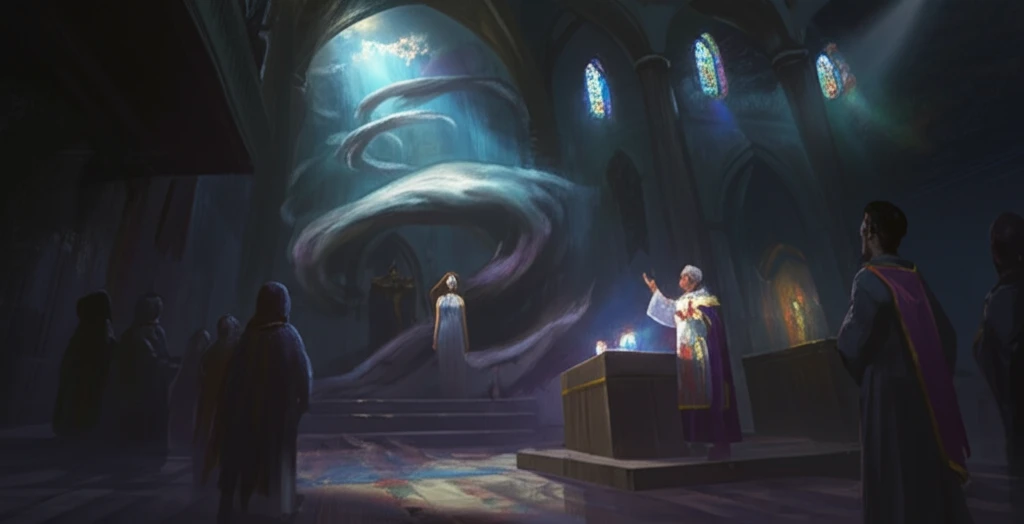
Battling Demons: Unveiling the Medieval Church's Approach to Exorcism
"Explore how the medieval church used a combination of ritual, relics, and the power of faith to combat demonic possession."
The Middle Ages, a period often painted with strokes of religious devotion and societal upheaval, held a unique perspective on the battle between good and evil. Central to this worldview was the belief in demonic possession, a state where malevolent entities seized control of an individual's mind and body. In response, the medieval Church developed elaborate rituals and practices of exorcism, aiming to liberate the afflicted and restore order to the spiritual realm.
Exorcism during this era was far from a simple matter of reciting prayers. It involved a complex interplay of religious fervor, evolving medical understanding, and deeply ingrained social anxieties. The Church drew upon a variety of sources to inform their approach, including hagiographies (biographies of saints), liturgical texts, and even the personal experiences of clergy members.
This article explores the multifaceted nature of exorcism in the Middle Ages, examining the diverse sources that shaped its practice and revealing the underlying beliefs and anxieties that fueled its significance. We'll delve into the roles of saints, the power of relics, and the evolving understanding of demonic influence, offering a glimpse into a world where the line between the earthly and the supernatural was often blurred.
Cross-Referencing the Sources of Exorcism

The medieval Church's approach to exorcism wasn't based on a single manual or set of instructions. Instead, it was pieced together from various sources, each offering a unique perspective on the phenomenon of demonic possession and the methods to combat it. These sources included:
- Liturgical Texts: The Church's official liturgical texts provided structured prayers, blessings, and rituals that were adapted for use in exorcism ceremonies. These texts often drew upon biblical passages and traditional formulas designed to invoke God's protection and command the demons to depart.
- Personal Accounts: The experiences and observations of clergy members also played a role in shaping the practice of exorcism. Letters, treatises, and anecdotes offered insights into the perceived symptoms of possession, the effectiveness of different rituals, and the challenges of confronting the demonic.
- Artistic Representations: Medieval art, including illuminated manuscripts, sculptures, and panel paintings, often depicted scenes of exorcism. These visual representations provide valuable clues about the rituals, the roles of the participants, and the prevailing attitudes toward demonic possession.
The Enduring Fascination with Medieval Exorcism
The medieval Church's approach to exorcism offers a fascinating glimpse into a world where the boundaries between the natural and supernatural were often blurred. By examining the diverse sources that shaped its practice, we can gain a deeper understanding of the religious beliefs, medical understanding, and social anxieties that defined this complex and compelling aspect of medieval life.
